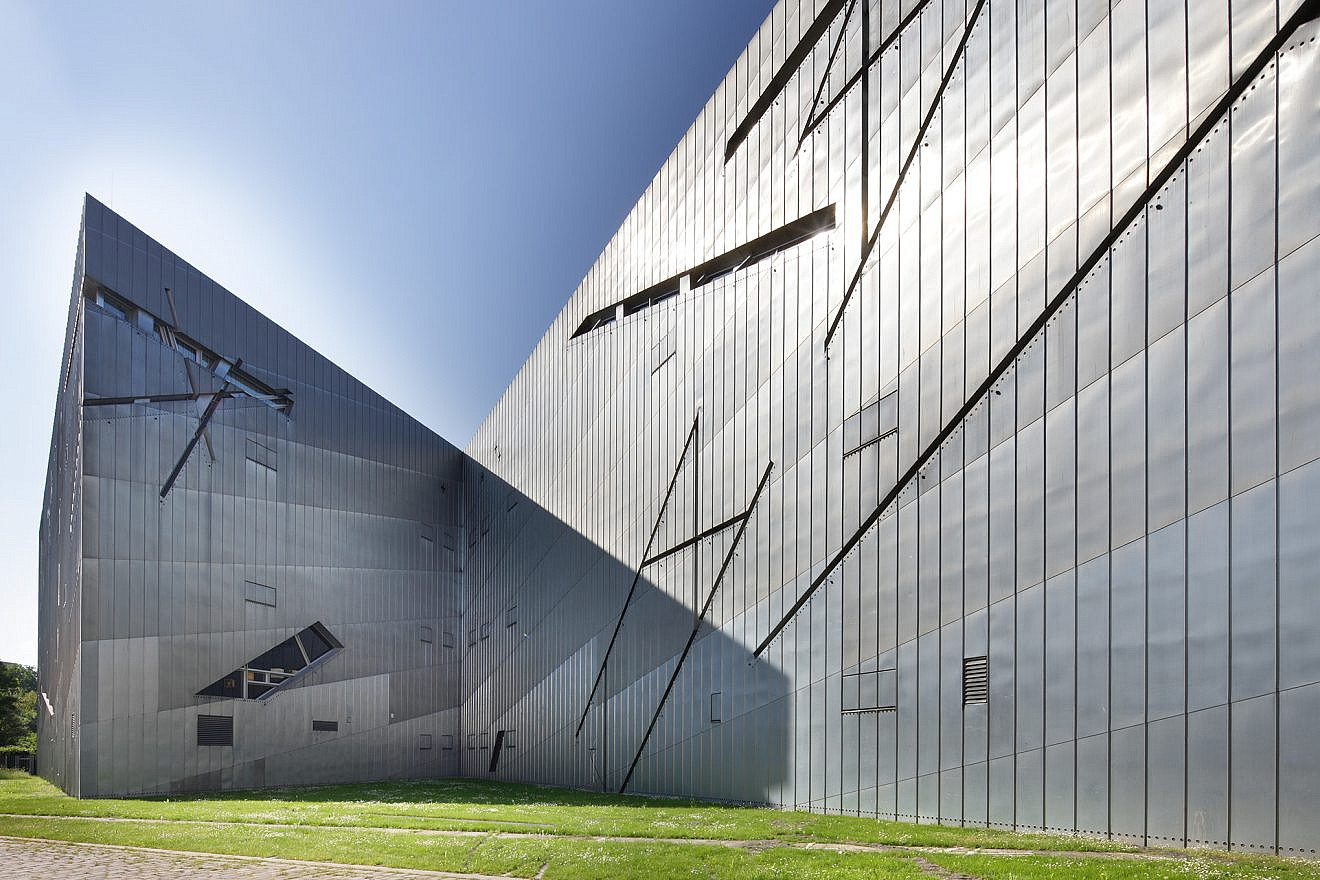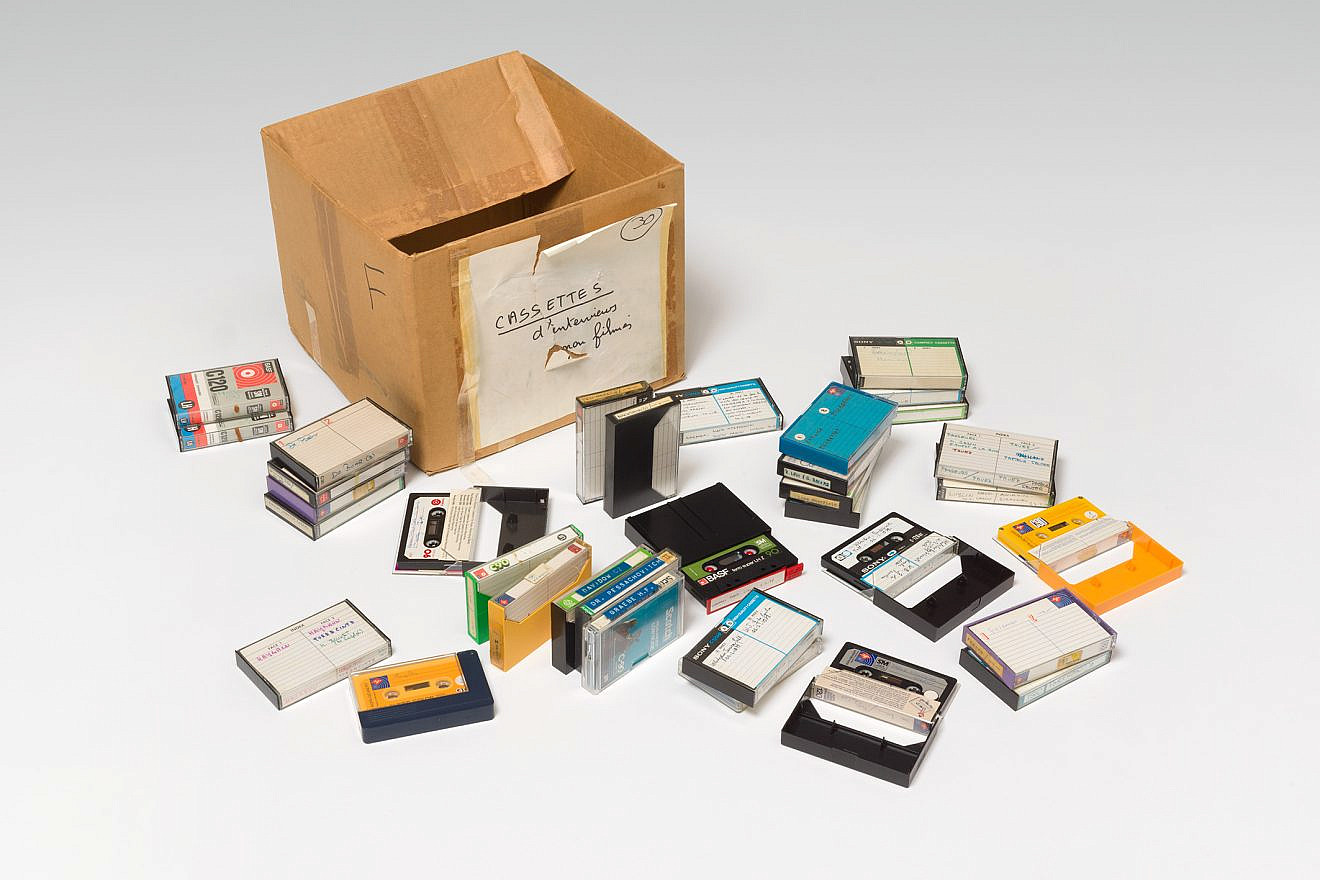As of this month, the Jewish Museum Berlin is home to a collection of objects that is listed on the United Nations Educational, Scientific and Cultural Organization (UNESCO) Memory of the World Register.
The original 16mm and restored 35mm film footage which French journalist Claude Lanzmann (1925-2018) used to create the 1985 documentary “Shoah,” as well as an audio archive associated with the project, earned the UNESCO listing. The grandson of Eastern European Jewish immigrants, Lanzmann and two colleagues recorded 200 hours of interviews with Shoah witnesses on cassette tapes. These form the archive that Dominique Lanzmann—Claude’s widow—donated to the museum in 2021.
“Housing a World Heritage item underscores the exceptional universal value and significance of the audio cassettes within our collection. These cassettes, now recognized on a global scale, hold historical, cultural and social importance,” Tamar Lewinsky, curator for contemporary history at the Jewish Museum Berlin, told JNS.
“Being part of the World Heritage list amplifies the museum’s responsibility and commitment to preserving and sharing these objects with the utmost care and professionalism,” Lewinsky added.
Lanzmann dedicated more than a decade to creating the “groundbreaking” nine-and-a-half-hour film, Lewinsky told JNS. She called the documentary “a profound exploration of the Holocaust, meticulously crafted through interviews with survivors, witnesses and perpetrators.”
The journalist conducted the interviews in a variety of places, including concentration camps, and he edited them “meticulously” to “create a powerful and immersive cinematic experience,” according to Lewinsky.
“Lanzmann eschewed the use of archival footage and relied solely on the testimonies of those involved, capturing the enormity and horror of the Holocaust through their personal narratives,” she said. “Lanzmann’s commitment to his work went beyond traditional filmmaking. He immersed himself in the subject matter, developing personal relationships with interviewees and dedicating himself to understanding the complexities of the Holocaust.”
“Shoah” is seen widely as “one of the most significant and influential films ever made about the Holocaust,” Lewinsky added. His approach “set a standard for Holocaust documentaries,” contributing “to shaping collective memory and understanding of the Holocaust.”
In 2025—the 100th anniversary of Lanzmann’s birth and the film’s 40th birthday—the museum plans to release the initial results of its work on the archives, Lewinsky said. “While we understand the anticipation surrounding the availability of the entire archive, we believe that it is essential to prioritize the quality of the restoration and the thoroughness of the subsequent documentation process,” she told JNS.

‘Transport listeners to different places and surroundings’
A sound restorer is digitizing the cassette recordings—with funding from the Alfred Landecker Foundation—but there is no target date yet for the digitization of the entire archive being public, according to Lewinsky. When complete, the archive materials will be fully transcribed, translated and extensively researched.
“It is important to understand that these recordings were never intended for publication. They are sound recordings from the research phase for ‘Shoah,’” Lewinsky said. “Preliminary interviews with potential protagonists, background discussions with historians, site visits. There is, with one exception, no overlap with the film’s protagonists.”
The “immediacy” of the recordings—in Hebrew, Yiddish, French, Polish, English and other languages—has “a special effect on the listeners,” Lewinsky said. “The recordings transport listeners to different places and surroundings, allowing them to immerse themselves in the distinct atmospheres and contexts in which the interviews took place.”
Preserving the archive is both a “great privilege and a special obligation,” Hetty Berg, the museum’s director, stated. “The UNESCO distinction motivates us even more than before to explore the content of these holdings, open them up for research and make them accessible online.”


























